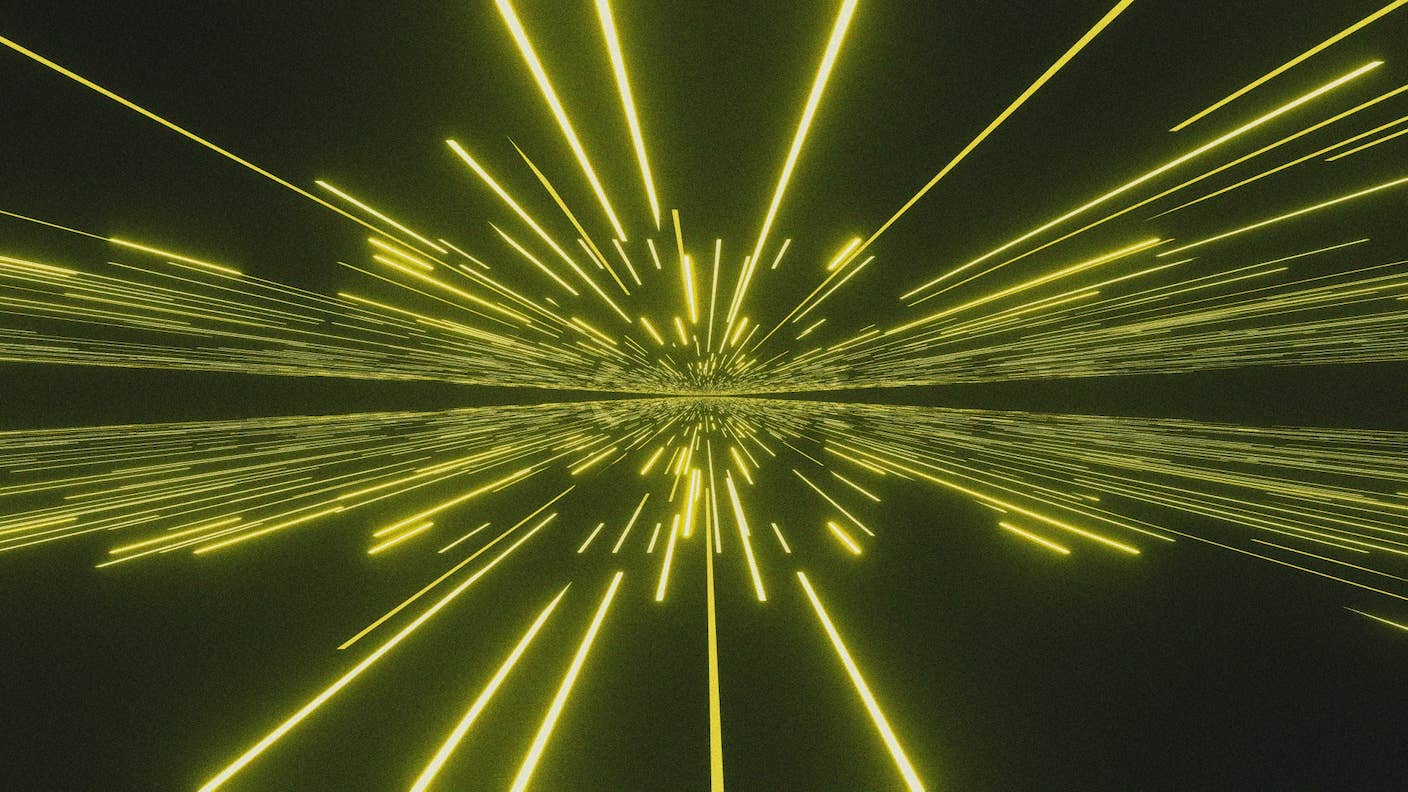Building the Blockchain to End All Blockchains

Share
Bitcoin, the first practical implementation of blockchain technology, was the buying opportunity of all time. The price of bitcoin has risen faster than any other asset in history, including tulips at the height of the tulip bubble.
Bitcoin, Ethereum, and other cryptocurrencies, also known as “digital assets,” have been making headlines due to the unprecedented returns early adopters are making from their investments in these digital assets.
Though the price of cryptocurrencies grabs attention, the underlying technology, a distributed digital ledger called blockchain, is even more exciting.
Fundamentally, blockchain allows for a democratic revolution in trust by enabling a decentralized peer-to-peer database, in which cryptography is used to validate transactions. Until blockchain, we’ve relied on centralized authorities such as credit card companies and banks to validate and back transactions.
However, there are significant and real transaction costs associated with relying on these centralized authorities, and of course, they take cuts of each transaction. Additionally, identity theft and manipulation of centralized authorities are real threats and common occurrences, as the recent Equifax hack has shown.
Blockchain replaces centralized authority with decentralized computing. It represents a fundamentally new way for humans to transact with one another by bypassing traditional centralized authorities currently at the heart of almost all human transactions.
But blockchain is still a young, relatively niche technology. There are quite literally billions of transactions daily, from financial trading to people buying cups of coffee.
To see widespread use, blockchain needs to overcome challenges in scalability, speed, and above all, flexibility. The first blockchain to solve these problems may become dominant. So, which blockchain is best positioned to win the race?
One Blockchain to Rule Them All
There are many different blockchains, and it is an open question as to whether one blockchain will become the dominant blockchain. If one blockchain were to become dominant, then the others may well fade away (take, for example, Facebook’s dominance over Myspace). That ultimately dominant blockchain would be valuable because it would become the foundation of how we all transact with one another in the future.
"If one blockchain were to become dominant, then the others may well fade away."
Currently, the most popular and widely used blockchains, Bitcoin and Ethereum, face a tremendous scaling problem—the networks, by design, consume ever-increasing amounts of power and process transactions slowly. For blockchain networks to truly scale, they need to be able to process transactions as fast as credit card transactions.
This is where Tezos comes in.
Tezos, a blockchain that will be released as proof-of-stake instead of proof-of-work—more on what this means below—has the potential to not only circumvent these scaling problems, but also to continuously implement new and cutting-edge cryptographic technology in predictable ways. The ability for Tezos to implement cutting-edge cryptography as it arises gives Tezos a chance to become the dominant blockchain.
Blockchain’s Power Consumption Problem
To verify your transaction as genuine, the currently popular blockchain networks, including both Bitcoin and Ethereum, use a proof-of-work method.
To add a new set of verified transactions (“blocks”) to the network (“blockchain”), serious computational effort (“work”) is required to solve puzzles. Once the work is complete, this can be verified using far less computational effort than it took to solve the puzzle itself. In exchange for that computational effort—or in other words, in exchange for work—the entity that executes the work has a chance to be awarded additional tokens on the network, bitcoins in the case of Bitcoin and ether in the case of Ethereum.
An entity can only get new bitcoins or ether if it correctly solves the puzzle.
Correctly solving these puzzles takes so much computational power that the “miners” do not have the computing capacity to attempt to influence the outcome of the network to generate the blocks most favorable to any one miner. Instead, they must focus on solving the puzzle as quickly as possible to increase their chance of generating the next block and thereby capturing the network’s reward. As each new block generates, it gets increasingly more difficult and energy intensive to generate the next block.
"Bitcoin mining alone uses 27 times as much energy as the entire Visa network."
Unfortunately, in practice, this leads to scaling problems across two dimensions: energy use and speed. The Bitcoin and Ethereum networks together currently use more electricity than countries such as Jordan, Iceland, and Syria. Bitcoin mining alone uses 27 times as much energy as the entire Visa network. This ever-increasing amount of energy makes these blockchain networks increasingly difficult to scale. Further, the networks are also slow. Bitcoin currently processes less than three transactions per second, and Ethereum processes only five transactions per second.
As nodes in the network use more computing power to generate new blocks, the puzzles miners need to solve get harder. Thus, more and more computing power is consumed by the network, but as miners work harder, no new benefits are generated.
The power is being consumed to prevent individual miners from influencing the network for their own benefit and recording those transactions that would most benefit any particular miner as the next block on the chain, but the computational power consumed by the network does not generate any independent value.
Vitalik Buterin, the 23-year-old creator of Ethereum, has proposed transitioning Ethereum from a proof-of-work system to a proof-of-stake system.
In a proof-of-stake system, entities can stake a portion of their tokens in the system on one new block or another. The block with the most stake behind it is the one added to the blockchain. A reward of network tokens is given to a random sampling of nodes on the network that chose to validate the latest block the network adds to the blockchain.
All the participants on the network are encouraged to validate the genuine version of the network in order to have a chance of receiving a reward for validating the genuine block.
Be Part of the Future
Sign up to receive top stories about groundbreaking technologies and visionary thinkers from SingularityHub.


In theory, proof-of-stake networks wouldn’t see spiraling energy requirements as miners vie for cryptocurrency with computational resources, which could make it more scalable.
But going from one system to the other isn’t perfectly straightforward.
The Most Flexible System Wins?
For Ethereum to change from proof-of-work to proof-of-stake, a centralized group of Ethereum developers need to update the network’s code. Then users on the Ethereum network will decide if they want to use the new version of Ethereum or continue to use the old version. If they split, and some use the old version and some the new, then the chain undergoes a “hard fork,” and both versions of Ethereum are available.
The Bitcoin protocol is notoriously difficult to change, but this summer, the Bitcoin network grew too crowded to process all of the demand on the network. Updating the Bitcoin protocol to support the Bitcoin network’s ability to process additional transactions led to a hard fork on August 1, 2017, and Bitcoin split into Bitcoin and Bitcoin Cash.
Tezos has two advantages here. It not only starts out as proof-of-stake but also implements proof-of-stake methods for updating the blockchain protocol itself.
Tezos token holders can vote to upgrade the Tezos protocol to implement new developments in cryptography and blockchain technology in the Tezos blockchain. Tezos developers propose rewards for implementing improvements in the network, and if Tezos token holders vote for a proposal to improve the network, the developers receive the reward that they proposed.
Tezos thereby incentivizes developers to improve the Tezos network.
If a great new advance in blockchain technology occurs, developers and Tezos token holders will be incentivized to implement those advances in the Tezos blockchain network. If there is someday one dominant blockchain network, that network will need to continuously implement cutting-edge developments in blockchain technology.
Tezos is currently the leading contender for a blockchain network that incentivizes improving the technology underlying the network itself. Tezos’s powerful governance structure is a big part of why Tezos raised a record setting $232 million in its initial coin offering in July, 2017.
Blockchain technology is often compared to the early internet. Despite the unprecedented gains found in Bitcoin and Ethereum, it may be that neither of them has the capacity to implement advances in blockchain technology fast enough to become the dominant blockchain network.
Think of all the value that is currently captured by centralized authorities—from the banking industry to music rights holder networks to the court system. If that value can be shared among participants in the dominant blockchain, then how much might the tokens that underlie the dominant blockchain be worth?
Which #cryptocurrency is best poised to reign supreme? https://t.co/SD5HVvGSkG
Disclosure: The author owns bitcoin, ethereum, Tezos tokens and assorted other digital assets. The author also has a small stake in Crypto Lotus LLC, a cryptocurrency hedge fund based out of the San Francisco Bay Area, and is an advisor at Green Sands Equity, both of which have positions in various digital assets. All opinions in this post are the author’s alone and not those of Singularity University, Crypto Lotus, or Green Sands Equity. This post is not an endorsement by Singularity University, Crypto Lotus, or Green Sands Equity of any asset, and you should be aware of the risk of loss before trading or holding any digital asset.
Image Credit: enzozo / Shutterstock.com
Nathana O’Brien Sharma is faculty at Singularity University in artificial intelligence, blockchain technology, and the future of law and governance. Nathana is general counsel at Labelbox, a leading artificial intelligence software company backed by Andreeson Horowitz, Kleiner Perkins, First Round, and Gradient, Google’s AI focused venture fund. She advises companies and governments on the application of blockchain technology and artificial intelligence. Nathana worked as an intellectual property associate at Gunderson Dettmer, a leading emerging company and venture capital law firm. She has also worked at the Israeli Supreme Court and the Center for Creative Technologies. Nathana is a JD/MBA graduate of Yale Law School and the Yale School of Management, as well as Singularity University’s 2012 Global Solutions Program.
Related Articles

Kids With Spinal Muscular Atrophy Show Dramatic Improvement With FDA-Approved Gene Therapy

These Were Our Favorite Tech Stories From Around the Web in 2025

How Will the Universe End? The Dark Eternity That Awaits Us Trillions of Years From Now
What we’re reading